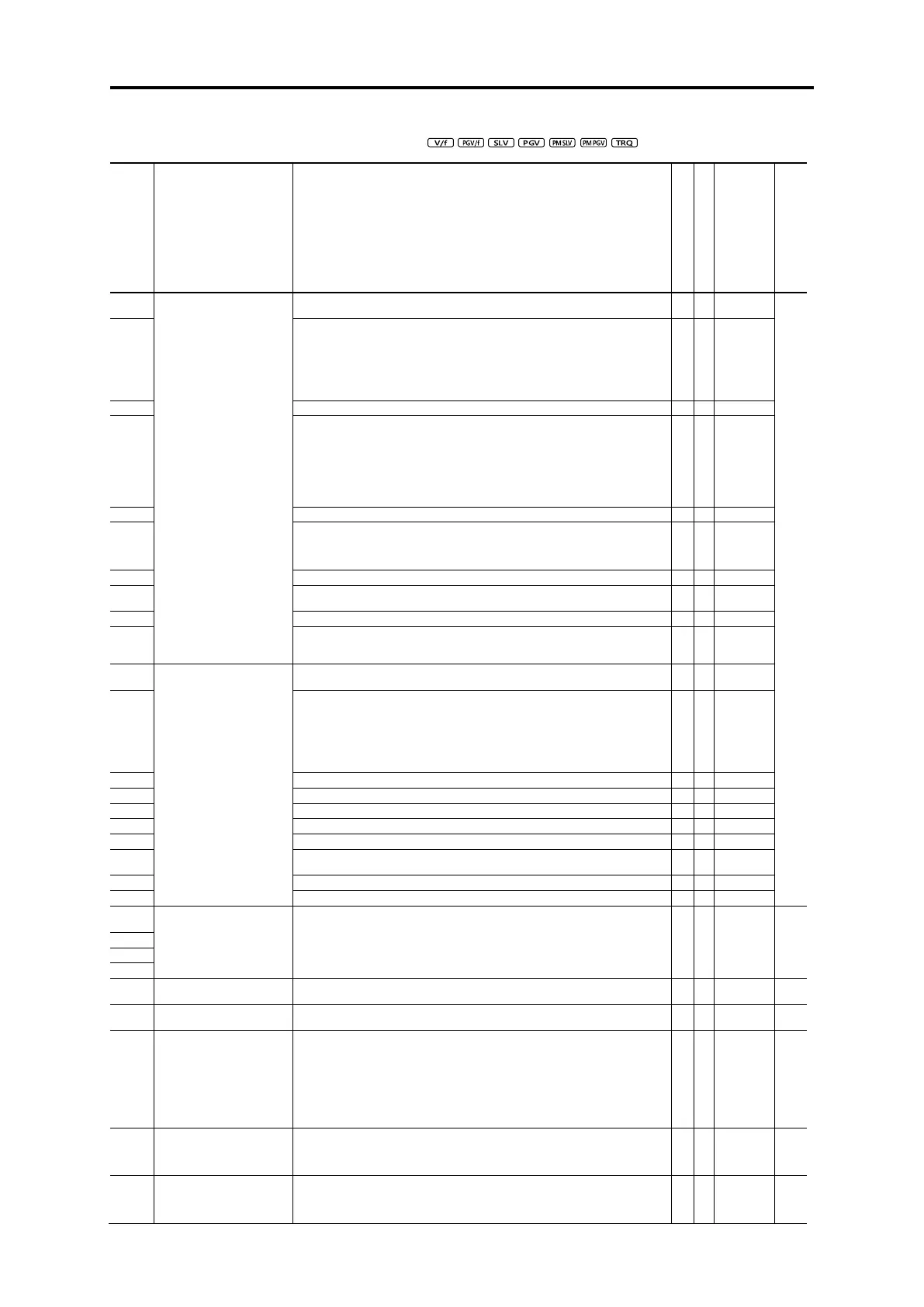5.2 Function Code Tables
[ 12 ] y codes: LINK Functions (Link functions)
Excluding certain exceptions, all control methods ( ) in these codes are valid.
Control method and Data setting range
RS-485 Communication 1
(station address)
(Communications error
processing)
0: Immediately trip with alarm er8
1: Trip with alarm er8 after running for the period specified by timer y03
2: Retry during the period specified by timer y03. If the retry fails, trip with
alarm er8. If it succeeds, continue to run.
3: Continue to run
0: 2400 bps
1: 4800 bps
2: 9600 bps
3: 19200 bps
4: 38400 bps
5: 57600 bps
6: 76800 bps
7: 115200 bps
0: None (Stop bit: 2 bits)
1: Even number parity (Stop bit: 1 bit)
2: Odd number parity (Stop bit: 1 bit)
3: None (Stop bit: 1 bit)
(Communication time-out
detection time)
0: No detection, 1 to 60 s
0: Modbus RTU protocol
1: Reserved
2: Fuji general-purpose inverter protocol
RS-485 Communication 2
(station address)
(Communications error
processing)
0: Immediately trip with alarm erp
1: Trip with alarm erp after running for the period specified by timer y13
2: Retry during the period specified by timer y13. If the retry fails, trip with
alarm erp. If it succeeds, continue to run.
3: Continue to run
(Communication time-out
detection timer)
(For adjustment by
manufacturer) *9
0000 to FFFF (in hexadecimal)
RTU current format
switching
0: Format 24
1: Format 19
Link function (Terminal [X]
operation selection)
Data clear processing for
communication error
0: Do not clear data when a communication error alarm occurs. (Compatible
with conventional inverters)
1: Clear the data of function codes S01/S05/S19 when a communications
error occurs.
2: Clear the run command assigned bit of function code S06 when a
communications error occurs.
3: Clear both data 1 and 2 above.
* Applicable alarms: er8, erp, er4, er5
Communication
compatibility mode
0: Disable
1: Reserved
2: Enable (G1 compatible)
3: Enable (GX compatible)
Communication data
storage selection
0: Store in nonvolatile memory (Rewritable times are limited)
1: Write in temporary memory (Rewritable times are unlimited)
2: Save all data from temporary memory to nonvolatile memory (After all
save, return to Data 1)

